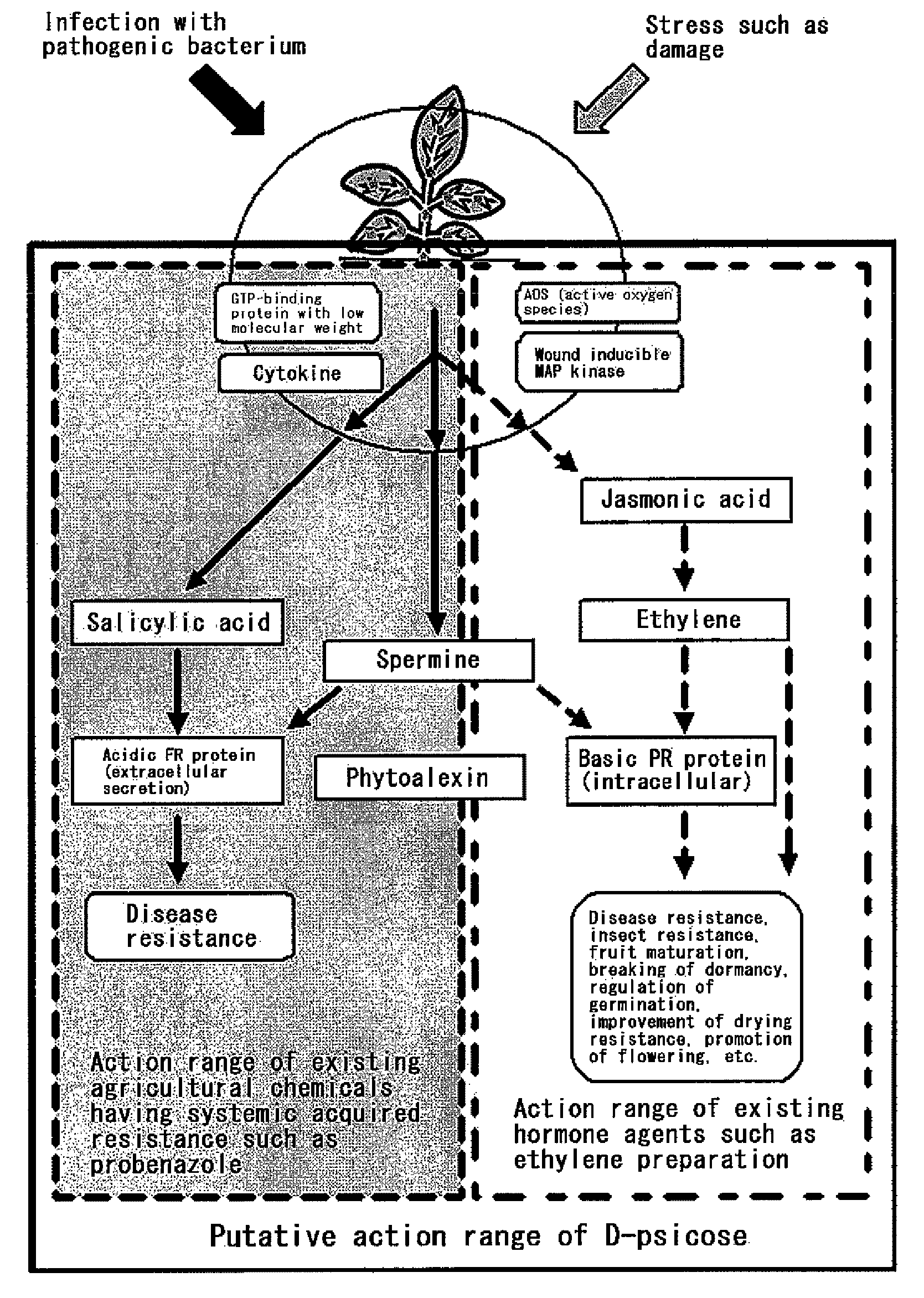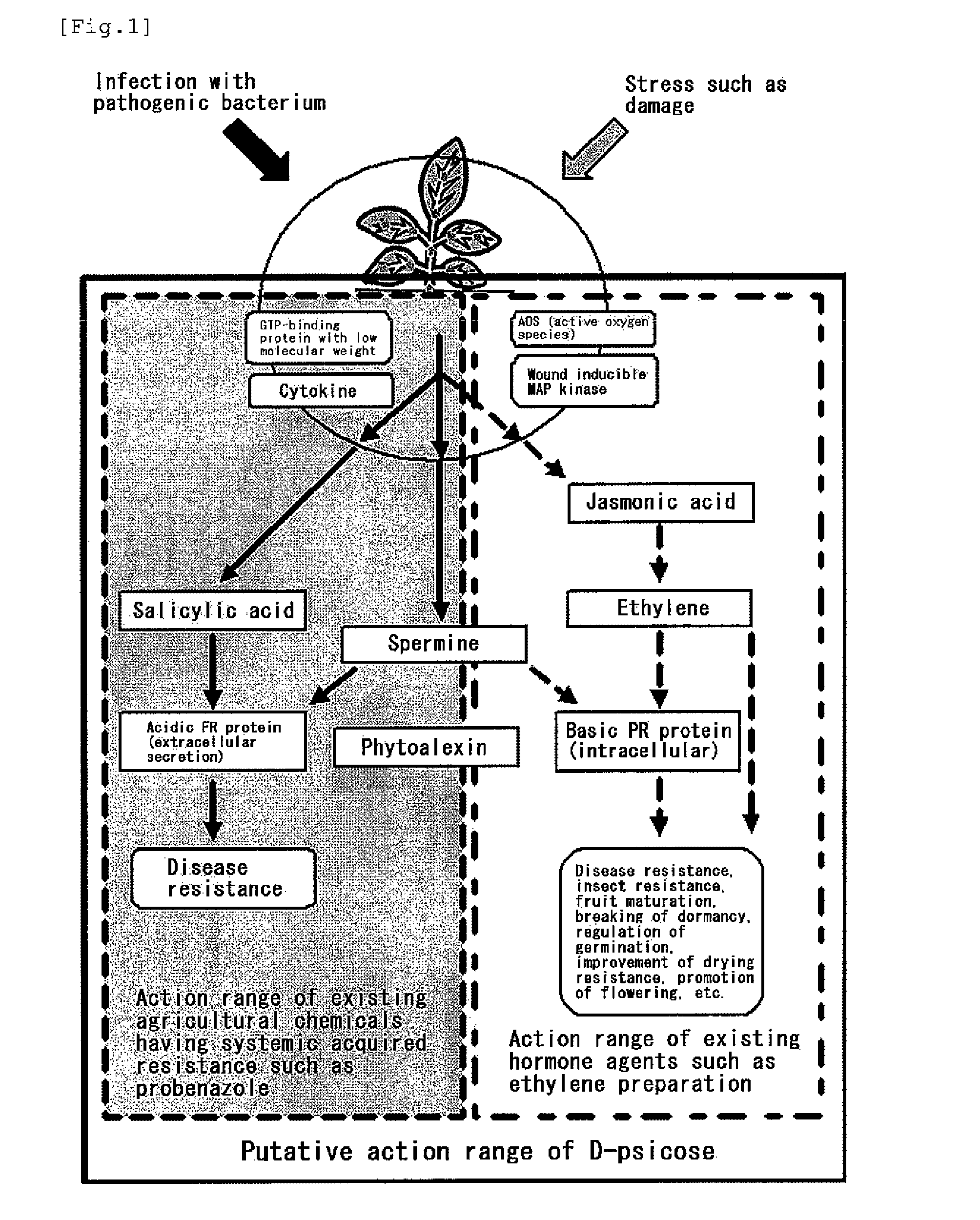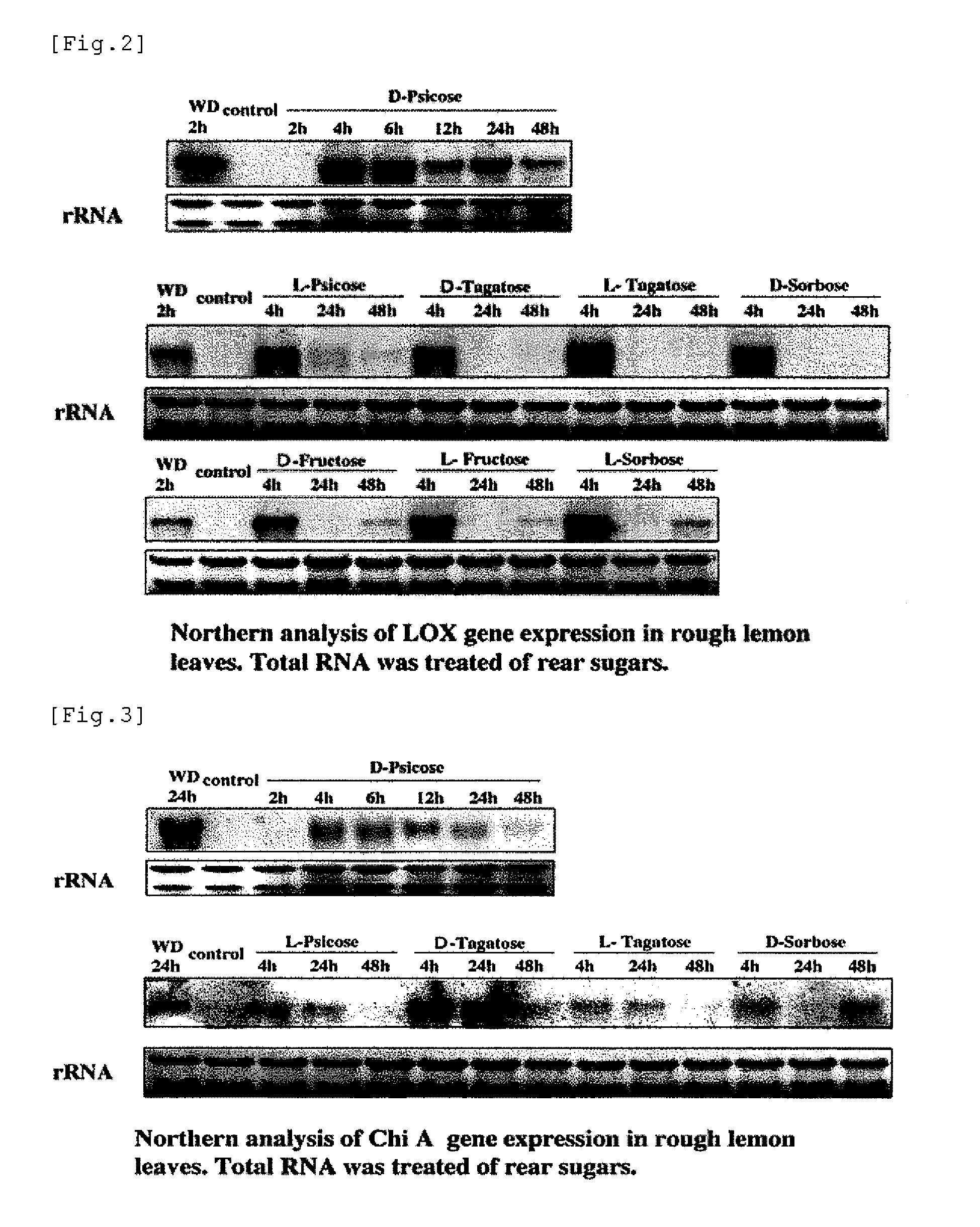Utilization of rare sugars in plant or microorganism
a technology of rare sugar and plant or microorganism, which is applied in the field of rare sugar utilization, can solve the problems of inability to contribute to the improvement of the growth and yield of plants any more, the action of these substances is diverse and complicated, and the use of these substances is limited, so as to improve the resistance to various stresses, improve the resistance to, and improve the effect of disease resistan
- Summary
- Abstract
- Description
- Claims
- Application Information
AI Technical Summary
Benefits of technology
Problems solved by technology
Method used
Image
Examples
example 1
[Materials and Methods]
[0122]Cut leaves of rough lemon were treated by spraying each of 0.5 mM L-psicose, L- & D-tagatose and D-sorbose thereon and were let stand for 2, 4, 6, 12, 24 and 48 hours at 24° C. under the dark condition in a moist chamber. Then, from the treated leaves, total RNA was extracted and the expression of genes of lipoxygenase and chitinase was analyzed by Northern blotting. The assays and analyses were repeated at least 3 times in all the treated plots, and equivalent results were obtained.
[Results and Discussion]
[0123]As a result of treating rough lemon by spraying D-psicose, and other than this, L-psicose, L- & D-tagatose or D-sorbose thereon, and analyzing the expression of genes of lipoxygenase and chitinase, which are defense-related genes, by Northern blotting, among the various rare sugars tested, in the case where the treatment was carried out with D-psicose, induction of the expression of lipoxygenase gene could be maintained for the longest time. Also...
example 2
[0126]Effect of D-psicose on Expression of Gene in Lotus japonicus
[0127]A pattern of induction of a gene in the case where D-psicose was added to a medium for Lotus japonicus was examined by an experiment using a cDNA array.
[Materials and Methods]
[0128]Lotus japonicus was germinated from a seed and cultivated in an L&B medium (hydroponic culture medium). When the seed was germinated, Mesorhizobium loti was also inoculated. This condition was applied to both a control plot and a plot of D-psicose addition. With regard to the array, a microarray on which 14,000 clones were immobilized by using a Lotus japonicus cDNA array was used. After test plants were germinated, they were cultivated with an L&B medium supplemented with D-psicose or without addition for 1 week in a growth cabinet (22° C., 30,000 Lux). After total RNA was extracted from the plant body, it was labeled with 33P in the process where it was converted to cDNA, and then hybridization was carried out. Reading was carried ...
example 3
[Materials and Methods]
[0131]Seedlings of a strawberry plant (variety: “smile ruby”) obtained by meristem culture under sterile conditions were used in an experiment.
[0132]As for the strawberry, by using ½ strength MS medium supplemented with 0.1% (w / v) D-psicose or D-glucose, the seedling plants were aseptically transplanted on Oct. 14, 2003, and then, cultivation was carried out in a culture chamber at 25° C. and 5,000 Lux (12-hour day length). Then, on Jan. 20, 2004, a survey was carried out with regard to the growth conditions of aerial part and underground part, the number of lateral buds and the like. The results are shown in Table 2.
[Results and Discussion]
[0133]As a result of adding 0.1% (w / v) D-psicose to the medium for tissue culture of the strawberry “smile ruby” and examining the effects on the growth thereof and the like, in the plot of D-psicose addition, the values exceeded in all the survey items except for the root length compared with those of the plot without addi...
PUM
| Property | Measurement | Unit |
|---|---|---|
| weight | aaaaa | aaaaa |
| total weight | aaaaa | aaaaa |
| temperature | aaaaa | aaaaa |
Abstract
Description
Claims
Application Information
 Login to View More
Login to View More - R&D
- Intellectual Property
- Life Sciences
- Materials
- Tech Scout
- Unparalleled Data Quality
- Higher Quality Content
- 60% Fewer Hallucinations
Browse by: Latest US Patents, China's latest patents, Technical Efficacy Thesaurus, Application Domain, Technology Topic, Popular Technical Reports.
© 2025 PatSnap. All rights reserved.Legal|Privacy policy|Modern Slavery Act Transparency Statement|Sitemap|About US| Contact US: help@patsnap.com



